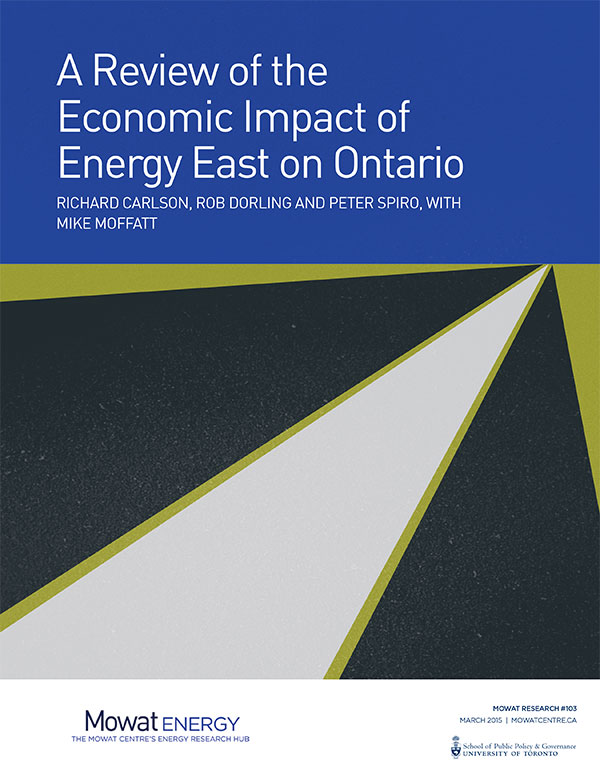March 30, 2015
As part of its detailed review of the proposed Energy East pipeline project, the Ontario Energy Board asked the Mowat Centre to conduct an analysis of the economic impacts of Energy East on Ontario.
Three economic impact reports have already been prepared on the Energy East pipeline project. This paper evaluates those economic impact assessments and provides an analysis of some of the wider contextual issues that will influence the project’s eventual short-, medium- and long-term economic impact on the province.
Our report argues that a wider economic cost-benefit analysis that considers a broader range of variables could produce different estimates of potential economic impacts on Ontario. On balance, estimates of the economic benefits of Energy East may be overstated and may also underestimate the potential costs to the provincial economy.
Executive Summary
This report will evaluate the existing economic impact assessments on Energy East. It will also provide an analysis of some of the larger, missing contextual variables that will influence the project’s eventual short-term, medium-term and long-term economic impact on Ontario.
We believe that the claims about the project’s positive economic impacts on Ontario should not be seen as predictions of what is likely to arise. The analyses on which they rest use a type of economic model where the results can only be understood as suggestive. Furthermore, the results from the analyses are limited and only represent one possible scenario among many.
All three analyses use Input/Output (I/O) models to calculate their results, a common method of measuring the effect of new inputs into an economy and of modelling direct, indirect and induced benefits. I/O models are not very good at measuring large-scale impacts across a large economy such as Ontario’s, for such reasons as:
I/O models assume that past or present scenarios accurately predict the future, and do not account for any changes in the economy over the lifespan of the project.
I/O models assume large indirect benefits for the economy. They do this by applying multipliers to the direct project spending. A multiplier is an estimate of how spending on the project affects the rest of the economy. Multipliers tend to inflate indirect benefits because they do not account for shortages in labour and assume that without the project, resources would be idle.
Continue Reading
Our analysis also indicates that the benefits projected for Ontario may be over-estimated due to both the way I/O models project future impacts and the assumptions made when the models were developed. Any claims about substantial GDP growth and job creation in Ontario from pipeline construction should be viewed critically.
This is not to deny that Energy East would bring benefits to the province. But a wider economic cost-benefit analysis that considers a broader range of variables could produce different estimates of potential economic impacts on Ontario.
For example, for illustrative purposes we modelled the potential effect of the increase in oil exports as a result of Energy East on the Canadian-U.S. exchange rate. Under one scenario, oil exports from the pipeline could lead to a sufficiently large increase in the exchange rate that it may result in a larger reduction on Ontario’s GDP than the positive impacts that might be expected from the project. These kinds of medium-term and long-term, as well as more complex, impacts were not measured in earlier studies and any inclusion of these kinds of variables in the model would produce substantially different estimates of possible economic impacts on Ontario.
Our report has no view, implicit or explicit, on the overall merits of the Energy East project. It speaks exclusively to the possible economic impacts in Ontario.
Authors
Richard Carlson, Rob Dorling and Peter Spiro, with Mike Moffatt
Release Date
March 30, 2015
ISBN
978-1-927350-93-5
Mowat Research
No. 103








